Often draped in myths and legends, the rare beauty of black roses are not just a feast for the eyes but also a testament to nature's wonders.
Whether you've stumbled upon them in a storybook or caught a glimpse in a botanical garden, black roses have undeniably piqued curiosity for centuries.

If you're intrigued by these dark marvels and considering growing them in your garden, you're in the right place.
In this article, we delve deep into the heart of the natural black rose's mystique, sharing intriguing facts and expert care tips to help them thrive.
The Allure of the Black Rose
Black roses are symbols often found in fiction. The symbol of the black rose has many different meanings, including mystery, death, despair, and love that is obsessive.
In reality though, there is no naturally occurring black rose. Unique black roses are an especially dark shade of red, purple or maroon-burgundy.
Occasionally the color of the rose will be deepened by letting it sit in a vase with black food coloring, painting it, or burning the roses.
Some of the black rose varieties are hybrid tea roses, which is a fancy way of saying they bud one high centered flower on a single long stem.
Most of the tea rose varieties gained popularity in the middle of the 20th when high tea was the norm.
Before that time plenty of roses grew in clusters of blooms the best known of these varieties are polyanthas, rugosas, hybrid musks, noisettes, and floribundas.
Although quite rare, fortunately, there are several varieties to choose from if you are looking to plant these natural black roses. Below are some of them.
Black Magic Rose
Rosa Black Magic is a velvety black-red rose. It is a deciduous plant that is hardy in zones 7 and warmer areas up to zone 10.
It has a mild fragrance, and this rose is known to rebloom well.
Black magic roses grow in full sun, plants will grow five to seven feet tall, and two to three feet wide.

Black Magic rose bushes will need full sun. A perennial, the black magic rose was credited to Hans Jurgen Evers in 1995.
It is a hybrid tea rose which means black magic roses will bloom one rose to a stem.
Black Velvet Rose
The Black Velvet Rose is also called Rosa Tuscany, Old Tuscan, Black Tuscany, Old Velvet Rose, and The Old Velvet Rose.
A medium-sized rose with a mauve blend; it is considered a purple rose. Rosa Tuscany blooms in small clusters, and the bush grows three to four feet.
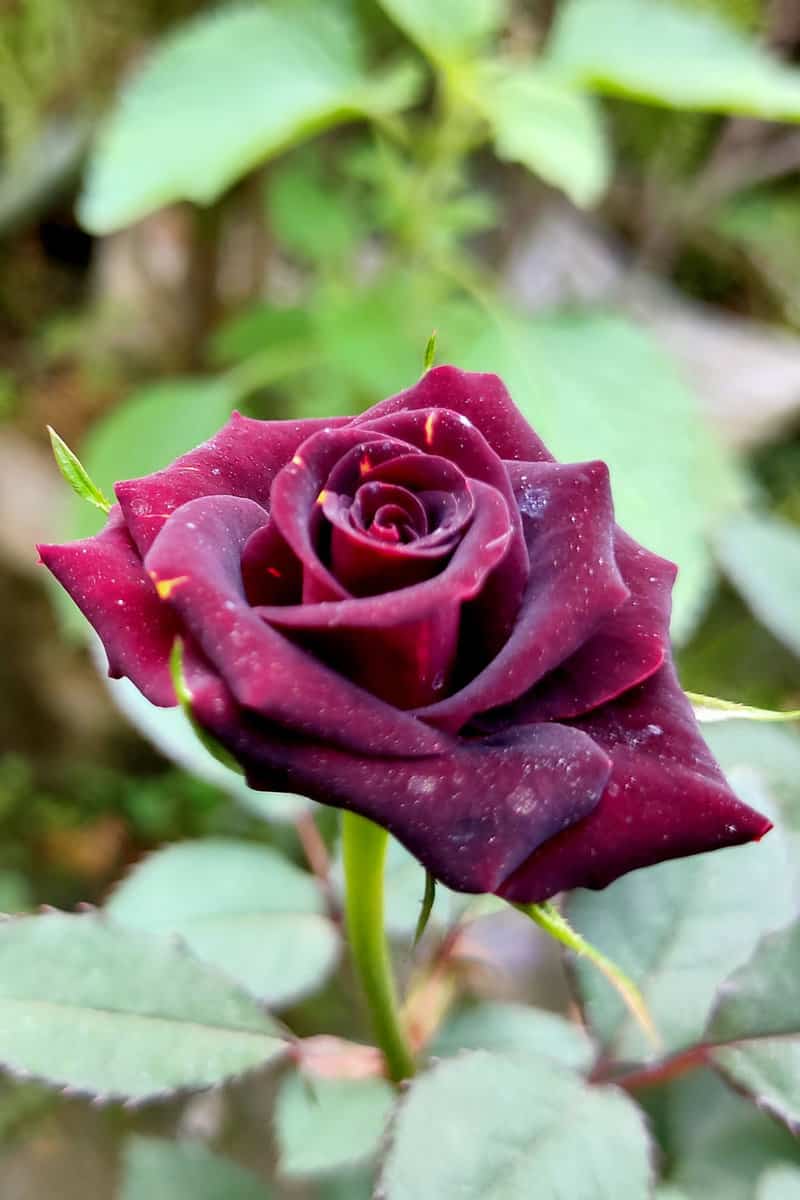
The Black Velvet Rose is hardy in USDA Zones 4-8, and its origins before 1820 are unknown.
Similar to the Black Magic Rose, this plant needs full sun but will tolerate partial shade.
Old Tuscan roses bloom in late spring to early summer. Black Tuscany roses are considered a shrub clustering variety of roses.
Black Baracca Rose
The Black Baracca Rose is known as a breed for the florist trade, but it will flourish outdoors as it is a hardy plant.
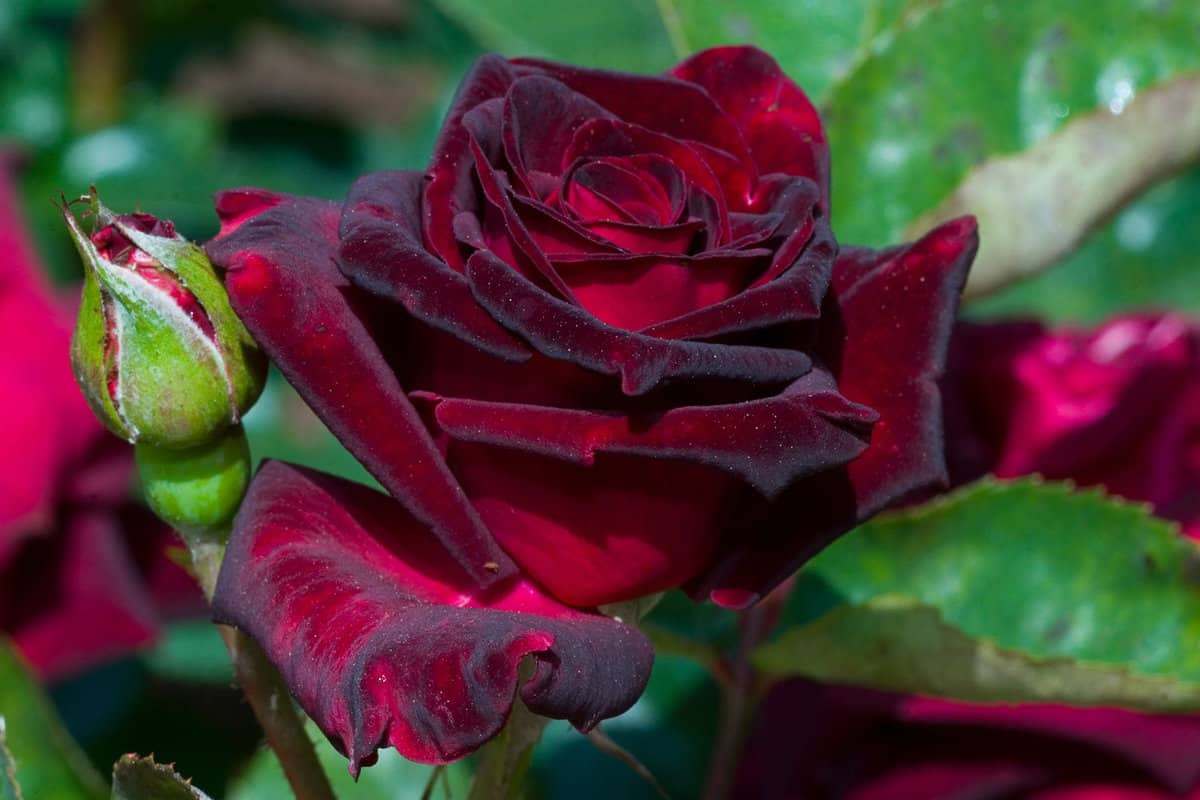
Black Baracca roses have a unique black-burgundy color with velvety petals. This rose is considered a hybrid tea rose.
This rose is known to be hardy in USDA zones 5-9. Black Baracca rose bushes will grow five to six feet tall and need 2 feet of spacing.
This beauty of a rose will bloom in summer with full sun and needs pruning in late fall or early spring.
Get your Black Baracca Rosa seeds on Amazon.
Black Jade Rose
Black Jade Rose is a miniature rose that grows upright and is a very hardy rose variety. Black Jade bushes only reach about 2 feet tall.
This variety is known as an excellent option for containers, rock gardens or in upfront areas along borders.

It's very dark red flowers almost black contrast beautifully with the dark green foliage of the plant.
This plant does best in areas with full sun and rich humus-filled soils that drain well.
This "Black" rose will bloom in summer. It is best to plant in late fall or early spring when the ground is not frozen.
This rose plant is a cross between hybrid tea roses, and miniature rose bushes, it was first introduced to the U.S. by Frank Benardella in 1985.
Black Beauty Rose
The Black Beauty Rose is named so because in bud form it is a deep black color and opens to a stunning crimson, with black tips in the petal.
Gardeners prize black Beauties medium-sized high centered blooms.
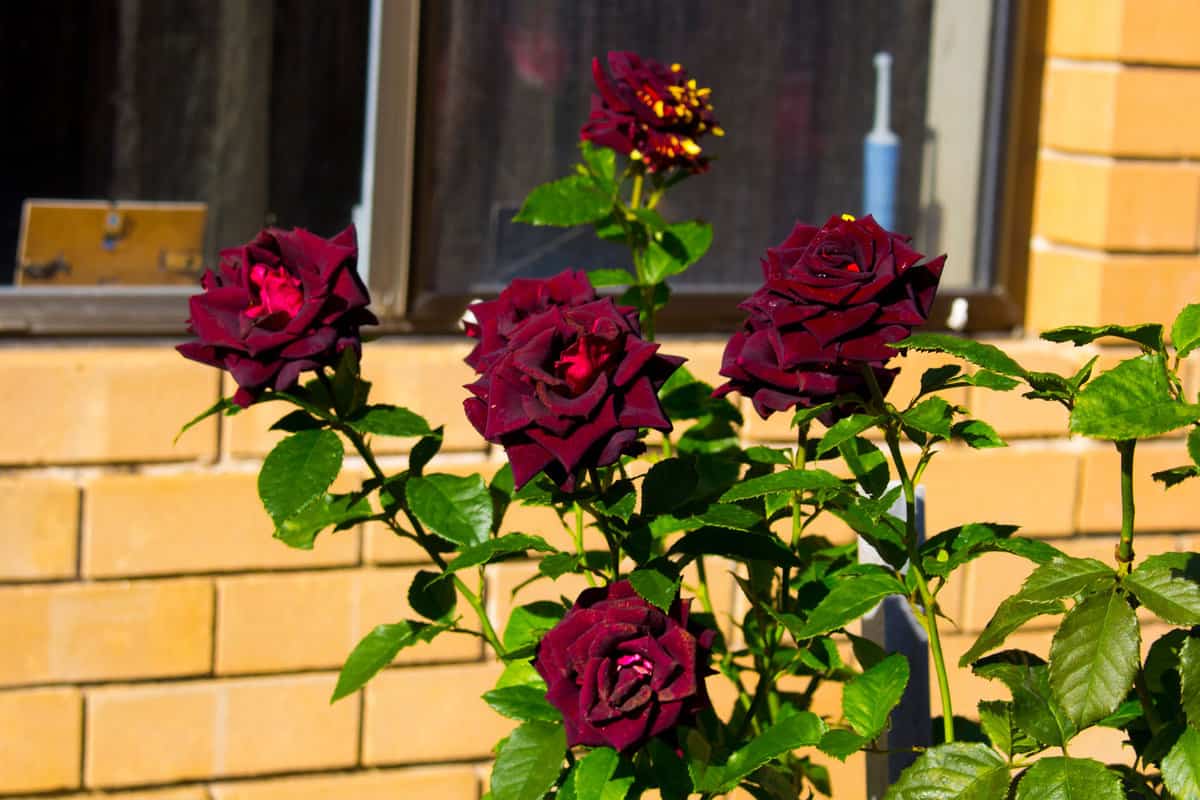
This dark red rose blossoms in clusters and reblooms well. Black Beauty roses are hybrid tea roses.
Black Beauty Roses have a compact, bushy growth habit of two to three feet. W. Kordes & Sons discovered Black Beauty Roses in 1998.
The Black Beauty rose grows optimally in zones 6 and warmer.
These roses love growing in full sun; this bush has showy red flowers that bloom in spring, summer, and fall.
Black beauty roses can be grown in 3 gallons or larger containers, assuming they drain well. They will need to be repotted every 2-3 years.
Black Ice Rose
Rosa Black Ice or the Black Ice Rose was hybridized in 1971 by Gandy.
The bush itself grows three to four feet and blooms with medium-dark red blossoms. Black Ice roses are mildly fragrant.
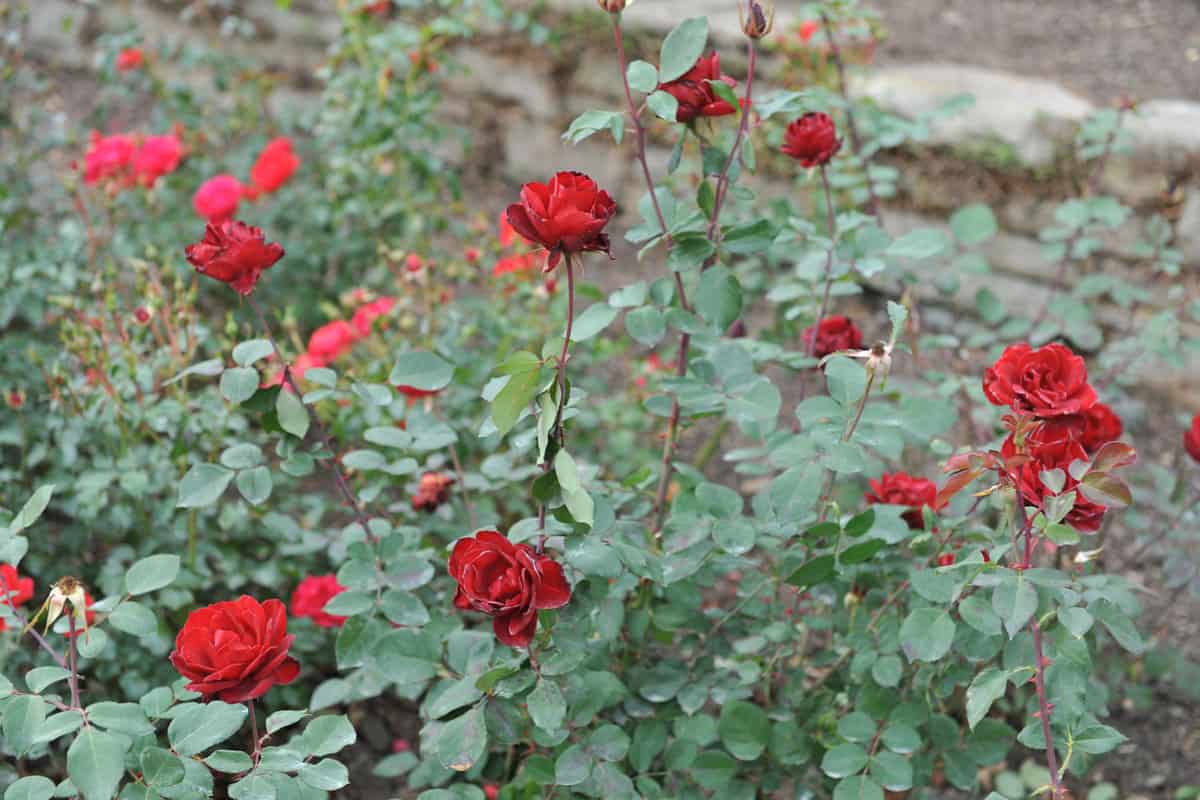
Hardy in USDA zones 5 and warmer this perennial shrub enjoys full sun and moderately acidic soil.
Black Ice roses have a growth habit of three to four feet in height, and a two to three-foot spread.
These roses bloom in spring, summer, and fall with brilliant red blooms.
Similar to Black Velvet rose bushes, this one is a clustering variety.
Basic Rose Care
Roses, in general, need a full six to eight hours of sunlight. So be sure you find just the right sunny spot for your rose bushes.
The best time to plant rose bushes is in the early spring after the last frost or six weeks before your average first frost date.
Roses don't like wet soil, so be sure to dig the hole deep enough to give the roots plenty of room in well-drained soil.
Roses like to be fed. Monthly organic fertilizers or compost are a great way to help your roses bushes thrive.
Roses will thrive when soil moisture is uniform through the growing season. The equivalent of one inch of water per week works well.
Enjoy Your Roses
There you have it: a list of naturally occurring black roses.
You now know where to grow them, a few essential tips to get you started, and the difference between clustering, and hybrid tea roses.
If you have ever wondered why roses have thorns, read here: Why Do Roses Have Thorns?
Love roses? You'll like this posts: 9 Flowers That Look Like Roses
And if you're on Pinterest, you can use this image below to share and pin this post.
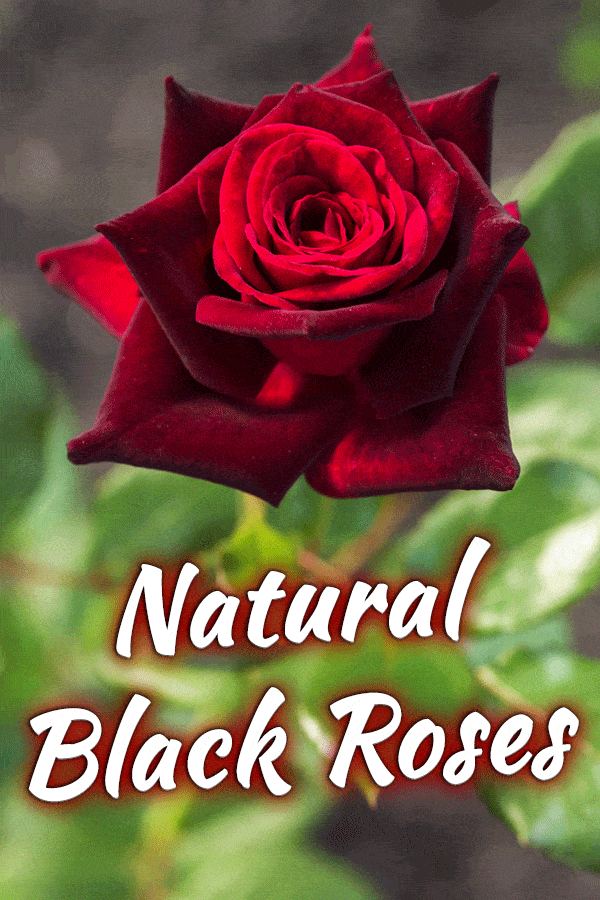


Endemic only to Turkey and growing in the Halfeti district of the southeastern province of Şanlıurfa, the black rose is renowned for its petals which adopt a pitch black hue in March-April and October-November. Its shade changes a bit during other seasons.